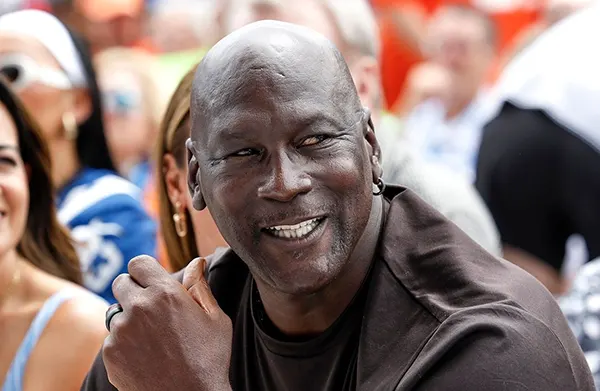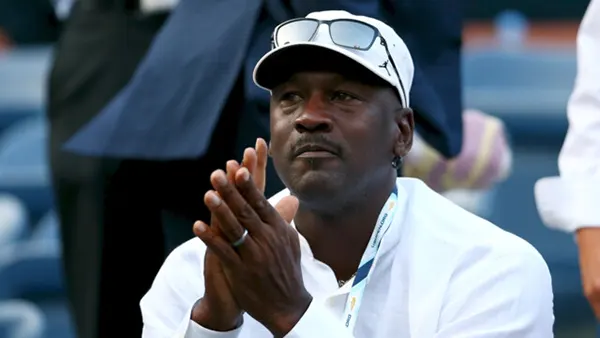
Michael Jordan and His Social Commitment in the 2020s
Michael Jordan, beyond being one of the greatest athletes in history, has become an influential figure in social responsibility. Over the last several years, his philanthropic efforts have significantly evolved, especially through his involvement with youth education and racial equality initiatives. These actions extend not only from personal conviction but also through long-standing brand collaborations that resonate with underserved communities.
Jordan Brand Wings: A New Chapter in Youth Empowerment
One of the most prominent pillars of Michael Jordan’s philanthropy in recent years is the Jordan Brand Wings program. Launched as a global scholarship and community empowerment initiative, Wings aims to bridge opportunity gaps for young people facing systemic inequalities. In the United States, the program funds full-ride college scholarships for Black students from low-income backgrounds, with over 2,800 scholarships awarded by 2025.
Globally, the initiative has expanded into cities such as Paris, Shanghai, and Manila, adapting to local educational needs. Each region tailors its scholarship and mentoring models to support students beyond financial assistance—providing career training, leadership workshops, and mentorship from industry professionals.
The program’s essence reflects Michael Jordan’s personal belief in the power of education to transform lives. The focus is not on producing athletes but nurturing thinkers, innovators, and socially engaged citizens from underserved communities.
Connections Between Wings and the Air Jordan Brand
While Wings is rooted in philanthropy, its funding and visibility undeniably tie to the success of the Air Jordan product line. Nike and Jordan Brand directly fund the initiative through product revenues, illustrating how a commercially successful brand can drive social change without relying solely on traditional charity models.
This relationship is transparent and strategic: specific Jordan shoe releases now include stories or collaborations that raise awareness about education equity and racial justice. The synergy creates a loop where consumer engagement contributes directly to societal advancement.
Michael Jordan’s endorsement of this strategy suggests a broader view of brand responsibility—not just selling shoes, but building institutions that last beyond his legacy as an athlete.
Community Investments: Courts, Clinics, and Cultural Centres
Jordan’s influence is also tangible in the physical spaces built for community use. Since 2020, multiple basketball courts have been renovated or built in underserved neighbourhoods across the U.S., with a focus on safe, accessible, and inspiring environments for young people. These courts serve as more than sports facilities—they are cultural meeting points and symbols of local pride.
In collaboration with healthcare providers and civic organisations, the Jordan Brand has also supported mobile health clinics and mental health awareness campaigns in Black communities. This reflects a broader understanding that social equity spans health, education, and economic opportunity.
Moreover, Jordan has contributed to museum and heritage projects, such as supporting the Smithsonian’s National Museum of African American History and Culture, reinforcing his commitment to preserving and honouring Black history through public education initiatives.
Long-Term Vision for Grassroots Empowerment
The long-term strategy behind Jordan’s community investments is rooted in systemic impact rather than one-off charity. Many of the projects operate with local organisations that ensure continuity, relevance, and local ownership. For example, the partnership with the YMCA and Boys & Girls Clubs integrates these new courts and spaces into broader youth development programs.
Another major element is sustainability. The Jordan Brand has invested in green renovations for older facilities, focusing on eco-friendly materials and designs that align with community-led urban renewal plans. These efforts elevate the symbolism of Jordan’s legacy into a future-facing contribution to both social and environmental wellbeing.
Critically, Jordan’s visibility in these projects remains low-key—most funding is distributed under the brand name, with local figures taking the spotlight. This decentralised approach fosters genuine community leadership and lasting change.

Social Justice Funding and Political Engagement
Following the 2020 protests after the killing of George Floyd, Michael Jordan and Jordan Brand pledged $100 million over 10 years to fight systemic racism. By 2025, substantial portions of this commitment have already been allocated to more than 50 organisations, ranging from legal defence funds to voting rights initiatives.
Much of this funding is aimed at policy-level change. Organisations supported include the NAACP Legal Defense Fund, Black Voters Matter, and the Formerly Incarcerated, Convicted People & Families Movement (FICPFM). The goal is not just relief, but empowerment—supporting those advocating for legislative reform and social accountability.
Another part of the effort includes grants for journalism collectives focused on race and equity, helping diversify the media landscape. This ensures that underrepresented voices are heard not only on the streets but also in editorial rooms and policymaking circles.
Is It Michael Jordan or the Brand Behind These Efforts?
While the Jordan Brand operates under the Nike umbrella, these initiatives are ultimately approved, endorsed, and often initiated by Michael Jordan himself. His personal statements, interviews, and direct involvement in key decisions affirm that these efforts are not mere branding exercises but genuine commitments.
It is also worth noting that Jordan has historically been cautious in public political discourse. The recent shift toward overt engagement reflects an evolution in his role—from global sports icon to socially responsible elder statesman. This transformation adds gravity to his messages and amplifies their impact.
In the end, the lines between Michael Jordan the individual and the brand bearing his name are blurred, but the outcomes speak for themselves. Whether through scholarships, courts, or policy reform, the impact is undeniably real and continues to expand.
